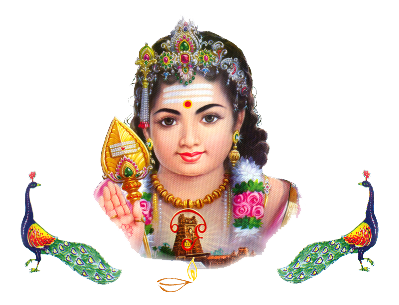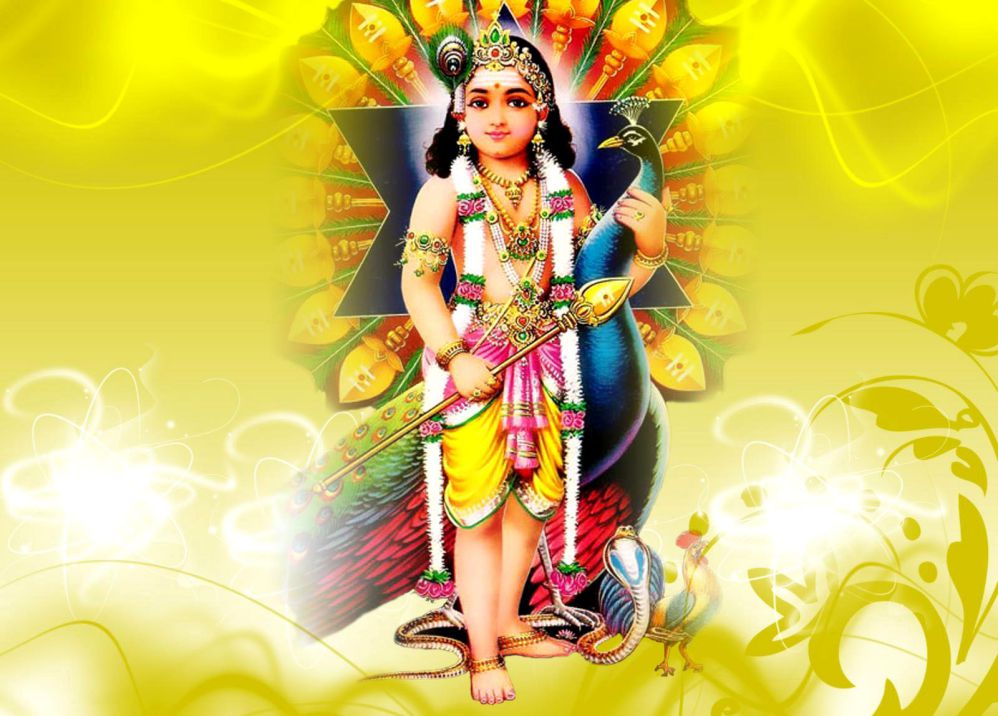No products in the cart.
Skanda Sashti is observed on the sixth day of the bright fortnight of the Tamil month of Aippasi (October – November). This day is dedicated to the second son of Lord Shiva – Lord Subramanya, also known as Kartikeya, Kumaresa, Guha, Murugan, Shanmukha and Velayudhan, who on this day, is believed to have annihilated the mythical demon Taraka. Celebrated in all Shaivite and Subramanya temples in South India, Skanda Sashti commemorates the destruction of evil by the Supreme Being.
Skanda
Skanda is an ancient deity mentioned in stone inscriptions and shown on coins (1st cent. to 5th cent CE). The story of Skanda is found among others in the Mahabharatha, Shiva Purana and is retold in Kalidasa’s Kumara Sambhavam. Chandogya Upanishad identifies Skanda as Sanat Kumara. In Tamil, Arunagiri’s Thiruppugazh, Nakkeerar’s Thiru Murugatrupadai, and scores of other literatures praise the glory of Muruga in devotional poetry.
The Story of Skanda Sashti
The story of Skanda Sashti is the story of the birth of Skanda or Kumara and the fulfillment of the purpose of His divine incarnation. “Tormented by the asura (demon/anti God) Tarakasura, the devas with Indra at their head went to the world of the self born the creator” (Kumara Sambhava 2.1)
Lord Brahma the Creator said ” only the spark of Shiva can produce the hero who will defeat the powers of the evil” Unfortunately, Shiva The king of yogis was lost in a deep state of meditation and samadhi. None of the Devas dared to disturb him, least of all convince him to create a progeny.
Upon Brahma’s suggestion, they sought the help of Parvati and Kama (the god of love). Parvati agreed to help and engaged herself in severe penance to attract Shiva’s attention. Kama also agreed to help and engaged himself in the suicidal mission of arousing Shiva from His state of Samadhi. Kama shot his arrows of love at Shiva who was eventually disturbed and the fire of anger from Shiva’s third eye burnt Kama into ashes.
The penance of Parvati and the sacrifice of Kama paid off. Shiva was aroused from his Samadhi. However, none could bear the sparks of His fiery seed. It fell into the mouth of Agni, and afterwards was received by Ganges, who in turn threw it into Sara Vana (forest of arrow like grass). Thus Saravanabava was born. He was also Skanda – Shiva’s power of chastity preserved through penance.
Skanda was raised by the six mothers of the divine constellation of Krithikai (pleiades). Karthikeya divided himself into six babies to be nursed by six mothers. When Parvati came and gathered all the six babies, He became Shanmukha – the one with the six faces and one body.
Shanmukha became Kumara – the powerful virile adolescent who was also the beautiful and the handsome (Muruga) . He was made the General (Deva Senapathi) of the God’s army. “….Of the army generals I am Skanda.”..(The Gita). Skanda received from his mother Parasakthi an all powerful Vel (lance). Hence He is also Sakthi Velan. He engaged the armies of Simhamukha, Surapadman and Tarakasura on a six day battle and vanquished all of them on the sixth day. The Asuras were annihilated and the Devas were liberated. The sixth day (Sashti) of the waxing moon (sukhla) in the month of Ashada (Oct/Nov) is celebrated as Skanda Sashti.
Celebrations and Rituals on the day of Skanda Sashti
Corresponding to the six days of the war over the evil forces, devotees undertake fasts, prayers, devotional singing, recitation of inspiring hymns and reading stories of Subramanya. In Tiruchendur and Tiruparankundram events leading to the conquest of the Asuras are dramatized and the exploits of the Lord are enacted on stage.
During these six days, devotees and thousands of people gather for feasts, and massive amounts of camphor are burnt while most of the devotees stay in the temples.
On the day of Skanda Sashti, elaborate festivals are held with grandeur in South India. Well known temples of Lord Subramanya found in Udupi, Palani Hills, Thiruparamkunram, Tiruchendur and Kathirgamam in South India, as well as in Malaysia and Sri Lanka have large fairs and festivals every year on Skanda Sashti. Special mention must be made of the grand celebrations at Thirupparamkunram, Tiruchendur Murugan temple, two of the Arupadai Veedu temples of Murugan. At Sikkal, the festival image of Subramanya receives a spear, from the Ambal shrine, and breaks out in sweat, a day before the climax of the festival.
Penance and Piercing
It is customary to undergo penance on Skanda Sashti in the form of carrying a ‘Kavadi’ to the various Subramanya shrines. Offering of Kavadi on Skanda Sashti is a form of popular worship.
Many devotees also pierce long needles through their cheeks, lips and tongue as they go into a delirium charmed by the powers of the Lord.
Hymns & Prayer for Lord Subramanya
The Tiruppugal, a popular religious book in Tamil, contains the inspiring devotional songs of Arunagirinathar in praise of Lord Subramanya.
Hymns from Kavadichindu and the Skanda Sashti Kavacham are also sung on this occasion. Here is a prayer in English for the occasion by Swami Sivananda:
“O my Lord Subramanya, O all-merciful Lord, I have neither faith nor devotion. I do not know how to worship Thee in the proper manner, or to meditate on Thee. I am Thy child who has lost his way, forgotten the goal and Thy Name. Is it not Thy duty, O compassionate Father, to take me back?
“O Mother Valli, will you not introduce me to Thy Lord? Thy love for Thy children is deeper and truer than that of anyone else in this world. Though I have become Thy worthless and undutiful child, O beloved Mother Valli, pardon me! Make me dutiful and faithful. I am Thine from this very second; always Thine. All is Thine. It is the Mother’s duty to correct Her reckless child when it strays aimlessly on the wrong path. Remove the veil of delusion that separates me from Thee. Bless me. Enlighten me. Take me back to Thy holy feet. This is my fervent prayer to Thee and Thy Lord, my beloved and ancient Parents.”
According to Swami Shivananda ” The Lord spent His childhood in Tiruchendur and took Mahasamadhi at Kathirgamam. If anyone goes to Kathirgamam (Sri Lanka) with faith, devotion and piety, and stays in the temple for two or three days , the Lord Himself grants His vision to the devotee.”
Skanda Sashti Viratham
There is no common method of Skanda Sashti fasting. Different devotees observe it differently. But there are some basic rules followed by all the devotees.
- Non-vegetarian food is completely avoided during the period.
- Some people also avoid garlic and onions.
- Those who are observing the fast make it a point to read scriptures related to Lord Murugan or recite the Kanta Sashti Kavasam or Subramaniya Bhujangam.
- Most devotees also visit Skanda temples during the period.
- When it comes to Kanda Sashti fasting, some devotees only take a single meal a day.
- Some take the meal at noon and others at night.
- Some devotees confine to fruits and juices during the 6-day period.
- There are several Skanda devotees who see the Vratam as an opportunity to clean the body and get rid of unwanted toxic elements. Such devotees confine to water, coconut water and other fruit juices.
Skanda Sashti Viratham Benefits
The Power of Six –
The number six is the symbolic representation of Muruga. Skanda Sashti spans six days, Muruga’s anthropomorphic form has 6 heads, he has 6 power houses (energy vortices), his powerful mantra has 6 syllables ‘Sa Ra Va Na Ba Va’ and Muruga represents our 6th sense.
According to the scriptures:
- Propitiating Muruga during the 1st day can improve business and relationships. Businessmen, married couples and unmarried youth can be particularly benefited during this day.
- Propitiating Muruga during the 2nd, 3rd and 4th days of Skanda Sashti can bring relief from health problems, as well as bringing a sudden turn of events leading to positive results.
- Propitiating Muruga on the 5th and 6th days of Skanda Sashti will bring spiritual bliss, financial favors and also growth in career/profession.
Skanda Sashti 2022 Dates

| Date | Day | Sashti |
| January 7, 2022 | Friday | Skanda Sashti |
| February 6, 2022 | Sunday | Skanda Sashti |
| March 8, 2022 | Tuesday | Skanda Sashti |
| April 6, 2022 | Wednesday | Skanda Sashti |
| May 6, 2022 | Friday | Skanda Sashti |
| June 5, 2022 | Sunday | Skanda Sashti |
| July 4, 2022 | Monday | Skanda Sashti |
| August 3, 2022 | Wednesday | Skanda Sashti |
| September 1, 2022 | Thursday | Skanda Sashti |
| October 1, 2022 | Saturday | Skanda Sashti |
| October 30, 2022 | Sunday | Soora Samharam, Skanda Shashti |
| November 28, 2022 | Monday | Subrahmanya Sashti, Skanda Shashti |
| December 28, 2022 | Wednesday | Skanda Shashti |
The Sashti tithi (6th day) of the Shukla paksha in the month of Kartika (October-November) is the most auspicious of them all. It is one of the renowned and the auspicious occasions celebrated in the Indian States of Tamil Nadu. On this felicitous day, Lord Murugan is revered across the country especially in the South Indian States. It is believed that a person who offers prayers and observes fasting on Shasti will generously receive blessings of Lord Murugan.






